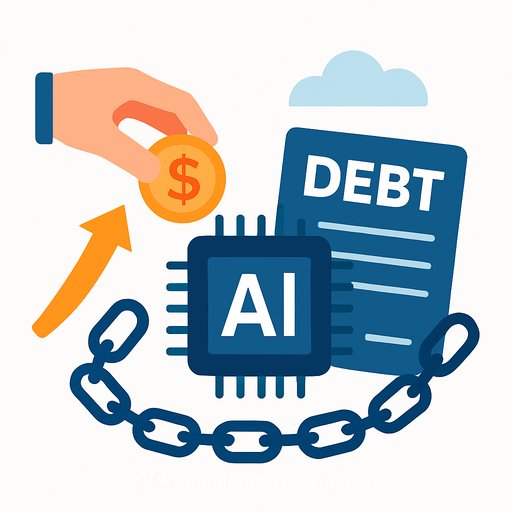AI's Promise vs P&L Reality: A Finance Playbook
"AI could eventually cure cancer, end poverty, and even bring world peace," wrote Dario Amodei. At the same time, "The house of cards is going to start crumbling… The amount of money being spent is not proportionate to the money that's coming in," said Sasha Luccioni to the New York Times. Finance sits between those extremes, converting vision into unit economics-or cutting it off when the math fails.
What the cash is saying
Training and inference spend is heavy, with compute, energy, and data shaping gross margins. Even as unit costs improve, volume growth can erase those gains if pricing trails usage.
- Compute and energy: watch GPU availability, cloud discounts, and power contracts; margin pressure often hides in these lines.
- Data: licensing fees, proprietary corpora, and legal reserves for content risk can shift COGS and OPEX.
- Go-to-market: long sales cycles and bundle-based pricing obscure true willingness to pay; concentration adds fragility.
Where revenue likely concentrates
- Picks-and-shovels: semiconductors, data centers, cooling, networking, and grid upgrades with contracted demand.
- Incumbents with distribution: adding AI features to increase ARPU and reduce support costs.
- Vertical software: deep workflows plus proprietary data that create stickiness and pricing leverage.
Unit economics to demand from any AI line item
- Gross margin after compute, data licensing, and human review-cleanly allocated, not averaged across suites.
- Inference cost per active user or per task, with quarter-over-quarter trend and stress tests for volume spikes.
- Contribution margin by tier; context window and latency SLAs drive cost-make them explicit.
- R&D vs serving cost split; pathway to scale down cost with caching, distillation, or smaller models.
- CAC, payback period, and net revenue retention excluding forced bundle uplift.
- Vendor concentration across model providers, clouds, and GPUs; mitigation plans for outages and price moves.
Scenarios and positioning
- Air pocket: growth slows, funding tightens, weaker apps consolidate. Favor cash generators and infra with backlog and take-or-pay terms.
- Plateau: usage steady, unit costs drift down, margins inch up. Accumulate firms with disciplined pricing and audited ROI.
- Productivity step-up: clear savings in support, code, and analytics. Back vendors with verified case studies and durable contracts.
Adoption steps for CFOs and FP&A
- Gate deployments: pilot → controlled rollout → scale. Each gate requires measured time saved, error rates, and <12-month payback.
- Price the full stack: model fees, retrieval, orchestration, guardrails, evaluation, monitoring, and human QA.
- Negotiate hard: usage caps, cost pass-through limits, model-change notices, data retention, IP indemnity, and refund-tied SLAs.
- Model energy exposure: data center surcharges and peak pricing can flow into COGS; plan for variance.
- Reduce risk: restrict sensitive data, log prompts and outputs, and require review for external content.
Signals to watch each quarter
- AI revenue share reported separately from bundle uplift, with cohort details.
- Gross margin trend versus compute pricing and availability.
- Capex, long-term purchase commitments, and off-balance sheet leases tied to GPUs and power.
- Third-party verified case studies, not demos.
- Open-source pressure on pricing and evidence of switching costs.
Bottom line
Grand narratives attract capital; cashflows keep companies alive. Hold both ideas: breakthrough potential and spend-revenue gaps. Finance teams win by pairing curiosity with hard metrics and contracts that protect downside.
Resources
- Stanford AI Index for independent trends on funding, performance, and costs.
- IEA: Data centres and networks for energy constraints that feed into unit economics.
- AI tools for Finance to map use cases to measured ROI.
- Courses by job to upskill finance teams on evaluation and governance.
Your membership also unlocks:






